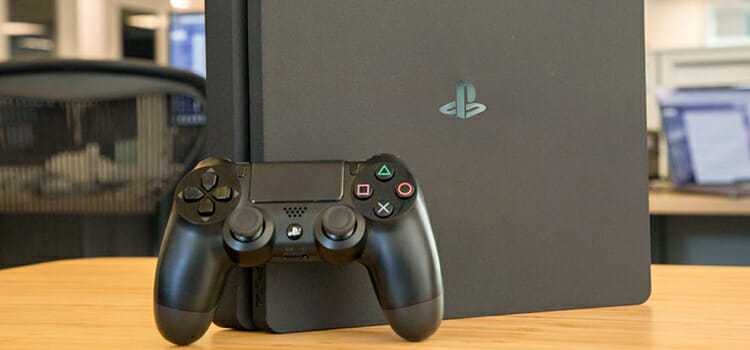As an avid gamer, there’s nothing more frustrating than battling input lag during intense gaming sessions. It can hinder your reflexes, disrupt your gameplay, and ultimately diminish your gaming experience. If you’re encountering this pesky issue on your PlayStation 5 (PS5), fear not! In this comprehensive guide, we’ll delve into the depths of input lag, its causes, and provide you with the ultimate arsenal of solutions to eliminate this gaming nemesis.

Image: www.techdim.com
What is Input Lag?
Input lag, a common ailment of digital devices, refers to the perceptible delay between an input command you execute (e.g., pressing a button) and its corresponding action being displayed on the screen. In the world of gaming, input lag can significantly impair your performance, leaving you feeling like you’re playing catch-up with the game.
Unveiling the Culprits of Input Lag
Before embarking on our quest to eliminate input lag, it’s crucial to understand its underlying causes. Let’s unravel the most common culprits:
-
TV Display Settings: Your television’s input latency, or the time it takes for the TV to receive, process, and display an image, can contribute to input lag.
-
Slow Internet Connection: For online multiplayer games, a poor or unstable internet connection can lead to increased latency, resulting in input lag.
-
Wired vs. Wireless Controllers: While wireless controllers offer convenience, they can introduce additional input lag due to wireless signal interference or weak battery power.
-
GPU or CPU Limitations: Inadequate processing power of your console or demanding games can lead to graphical bottlenecks, resulting in input lag.
The Ultimate Arsenal of Solutions
Now that we’ve identified the potential causes of input lag, let’s equip ourselves with the ultimate arsenal of solutions to vanquish this gaming adversary:
![How To Fix PS5 Controller Input Lag: [12 Quick Methods 2024]](https://techsroid.com/wp-content/webp-express/webp-images/uploads/2023/08/PS5-1.png.webp)
Image: techsroid.com
Mastering TV Display Settings
-
Enable Game Mode: Most modern TVs offer a built-in Game Mode that optimizes the display for gaming, significantly reducing input latency.
-
Adjust Picture Settings: Some TV settings, such as motion enhancement and smoothing, can add additional processing time, contributing to input lag. Disable these features for a more responsive gaming experience.
-
Consider a Gaming Monitor: Gaming monitors are specifically designed for low input latency, providing a competitive edge for fast-paced gaming.
Optimizing Your Internet Connection
-
Wired Ethernet Connection: Wired connections offer the lowest latency and most stable connection, eliminating the potential for Wi-Fi interference or signal drops.
-
Test for Internet Speed: Ensuring your internet speed meets the requirements of your online games is paramount. Use an online speed test to evaluate your connection and make any necessary adjustments.
-
Close Background Applications: Suspend or close any background programs or downloads that might consume bandwidth and contribute to internet lag.
Fine-Tuning Controller Performance
-
Wired Controllers: When possible, opt for wired controllers instead of wireless ones to eliminate wireless signal interference and ensure a stable connection with your console.
-
Fresh Batteries: Ensure your wireless controllers have fresh or rechargeable batteries. Low battery power can compromise wireless signal strength and introduce input lag.
-
Controller Recalibration: Calibrating your controllers can improve their responsiveness and reduce input lag. Refer to your PS5 user manual for instructions on how to recalibrate your controllers.
Addressing Hardware Limitations
-
System Updates: Regularly check for and install the latest system software updates for your PS5. Updates often include optimizations and bug fixes that can improve the console’s performance, potentially reducing input lag.
-
External Storage Solutions: Installing demanding games on an external SSD or hard drive with faster data transfer speeds can minimize loading times and reduce input lag during gameplay.
-
Consider the Game: Some games, especially graphically intensive ones, may demand more processing power than your console can provide. Adjust your graphics settings or consider upgrading your console to a more powerful model to improve performance and reduce input lag.
How To Fix Input Lag On Ps5
Conclusion
Vanquishing input lag on your PS5 requires a multifaceted approach that tackles potential causes from various fronts. By embracing the solutions outlined in this guide, you can reclaim a seamless gaming experience, unleashing your full potential on the virtual battlefield. But remember, customization is key. Explore the options presented and tailor the solutions to your unique gaming setup and preferences. May your gaming sessions henceforth be devoid of annoying delays, allowing you to conquer every challenge with precision and finesse.